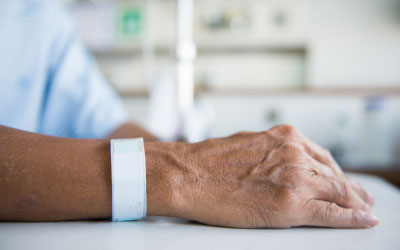Targeted Therapy for Leukemia
Targeted therapy drugs are a first line of treatment for certain types of leukemia. These medicines find and target specific proteins or changes in cells that cause leukemia. Unlike chemotherapy (which affects healthy and diseased cells), targeted therapy focuses only on the cell changes that cause the cancer. The drugs cause minimal, if any, damage to healthy cells.
How does targeted therapy treat leukemia?
There are different types of targeted therapy drugs for leukemia. These lab-made drugs can find specific substances in leukemia cells, such as proteins or genetic (DNA) changes. The drugs then damage or destroy the diseased cells. Some targeted therapy drugs are also an immunotherapy. The drugs bolster the immune system’s ability to find and destroy the targeted leukemia cells.
Targeted therapy affects leukemia cells in different ways depending on the specific drug. A targeted therapy drug may:
- Block, disrupt, or turn off the chemicals inside cancer cells that send the signals that promote cell growth and function
- Change proteins inside the cancer cells, leading to cell death
- Deliver toxic chemicals to cancer cells, killing only the diseased cells
- Help the immune system identify and kill cancer cells
Who needs targeted therapy for leukemia?
Leukemia cells must have a specific gene change or mutation for targeted therapy to work. The drug targets the changed gene. A genetic test (a type of blood test) checks for these cell changes to determine whether targeted therapy is a treatment option.
Targeted therapy may be an effective first treatment for people who have:
What other types of leukemia does targeted therapy treat?
People with other types of leukemia may receive targeted therapies when chemotherapy isn’t effective. Or they may get targeted therapy along with other leukemia treatments.
When appropriate, doctors use targeted therapy drugs to treat:
What are the types of targeted therapy for leukemia?
Types of targeted therapy drugs for leukemia include:
- Tyrosine kinase inhibitors (TKIs)
- Monoclonal antibodies
Tyrosine kinase inhibitors (TKIs)
TKIs are the preferred first treatment for CLL and CML, as well as some cases of ALL. These oral drugs block kinases, the proteins inside cancer cells that tell them to grow and reproduce. Some proteins allow cancerous cells to survive longer than they should. TKIs interfere with cell communication. They stop leukemia cells from multiplying and cause the cells to die.
As a first line of treatment, TKIs treat:
- CML: TKIs for CML target a rare gene change called the Philadelphia (Ph) chromosome. This genetic mutation triggers the production of an abnormal BCR-ABL protein, which causes cancerous cells to grow out of control. You don’t inherit the Ph chromosome. It occurs spontaneously for no known reason. In many instances, TKI therapy leads to remission (no evidence of disease). Some people can stop the treatment and stay in remission. TKIs are also an effective childhood leukemia treatment for kids with CML.
- ALL: The Ph chromosome causes one in four cases of ALL. Doctors use TKIs to treat this specific gene-mutated type of ALL in adults and children.
- CLL: TKIs for CLL target spontaneous gene changes in B-cells (B-lymphocytes). When healthy, these white blood cells make antibody proteins that help the immune system fight infections and diseases. The genetic mutation causes the body to make an excess of immature white blood cells or lymphoblasts, causing CLL.
- NPM-1 mutated AML: Changes to the nucleophosmin (NPM-1) gene cause one in three cases of AML. Doctors use TKIs to treat this specific gene-mutated type of AML in adults.
Monoclonal antibodies
Monoclonal antibodies are lab-made proteins that attach to a targeted substance outside or inside leukemia cells. You receive this treatment through an IV. Depending on the drug, monoclonal antibodies treat leukemia by:
- Killing cancer cells directly
- Guiding the delivery of chemotherapy drugs to cancer cells, making chemo more effective
- Delivering a radioactive substance called an isotope directly into cancer cells (radioimmunotherapy)
- Activating checkpoint proteins in cancer cells to help the immune system find and destroy the diseased cells
What are the side effects of targeted therapy for leukemia?
Some people who get targeted therapy have few, if any, side effects, while others experience more severe problems. Most side effects go away when treatment stops and healthy cells have time to recover. In the meantime, you can take steps to manage treatment side effects.
Side effects of targeted therapy include:
- Digestive problems like nausea, vomiting, constipation, or diarrhea
- Fatigue
- Hair changes, such as brittle hair, hair loss, or changes to hair color
- High blood pressure and heart damage
- Skin changes, such as rashes, discoloration, dryness, or itching
- Slow-healing wounds and mouth sores
- Swelling in the legs, feet, and face
Treatment resources for you and your loved ones
Support can make a significant difference when you need leukemia treatments. Check out our directory of resources, including treatment-specific webinars, for patients, families, and caregivers.



